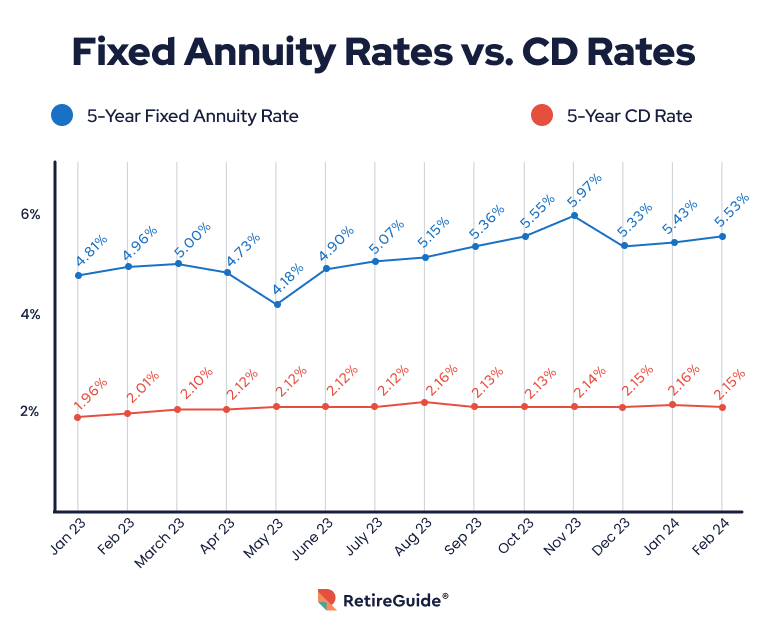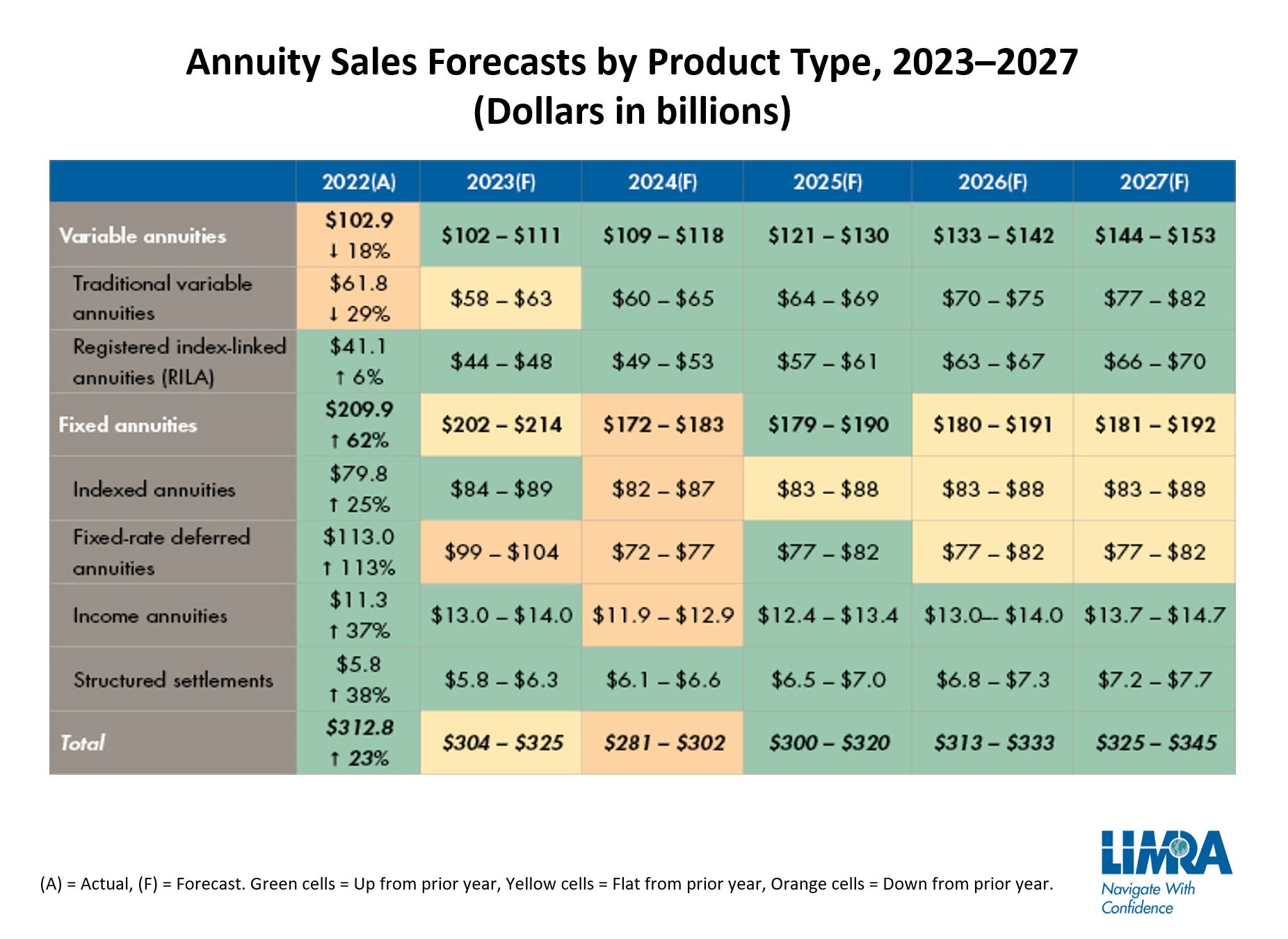All Categories
Featured
Table of Contents
The settlement may be spent for growth for an extended period of timea single premium deferred annuityor invested for a brief time, after which payment beginsa single costs immediate annuity. Solitary costs annuities are frequently funded by rollovers or from the sale of a valued property. A flexible premium annuity is an annuity that is planned to be moneyed by a collection of repayments.
Owners of dealt with annuities understand at the time of their purchase what the worth of the future capital will certainly be that are created by the annuity. Clearly, the variety of money flows can not be recognized ahead of time (as this depends upon the contract proprietor's life expectancy), but the ensured, repaired rates of interest at the very least provides the owner some degree of certainty of future income from the annuity.
While this difference seems straightforward and straightforward, it can considerably affect the worth that an agreement proprietor ultimately originates from his/her annuity, and it develops substantial uncertainty for the agreement proprietor - Variable annuity growth potential. It additionally typically has a product influence on the level of costs that a contract proprietor pays to the providing insurance policy firm
Fixed annuities are typically made use of by older financiers who have actually limited possessions yet that intend to balance out the risk of outliving their properties. Set annuities can work as a reliable tool for this objective, though not without particular downsides. As an example, when it comes to immediate annuities, when a contract has been bought, the contract owner relinquishes any type of and all control over the annuity possessions.
Decoding How Investment Plans Work A Comprehensive Guide to Fixed Vs Variable Annuity Pros And Cons Defining the Right Financial Strategy Advantages and Disadvantages of What Is A Variable Annuity Vs A Fixed Annuity Why Choosing the Right Financial Strategy Is a Smart Choice How to Compare Different Investment Plans: A Complete Overview Key Differences Between Different Financial Strategies Understanding the Risks of Long-Term Investments Who Should Consider Fixed Index Annuity Vs Variable Annuities? Tips for Choosing the Best Investment Strategy FAQs About Fixed Annuity Or Variable Annuity Common Mistakes to Avoid When Planning Your Retirement Financial Planning Simplified: Understanding Fixed Index Annuity Vs Variable Annuity A Beginner’s Guide to Deferred Annuity Vs Variable Annuity A Closer Look at How to Build a Retirement Plan
For example, a contract with a typical 10-year surrender duration would bill a 10% surrender cost if the contract was surrendered in the initial year, a 9% abandonment cost in the 2nd year, and so forth till the abandonment cost gets to 0% in the agreement's 11th year. Some delayed annuity contracts include language that permits for little withdrawals to be made at numerous periods during the abandonment duration scot-free, though these allocations usually come with a cost in the form of lower guaranteed rates of interest.
Equally as with a dealt with annuity, the proprietor of a variable annuity pays an insurer a round figure or collection of payments for the guarantee of a series of future payments in return. Yet as stated above, while a fixed annuity expands at an ensured, constant price, a variable annuity expands at a variable rate that relies on the efficiency of the underlying investments, called sub-accounts.
During the build-up phase, possessions bought variable annuity sub-accounts grow on a tax-deferred basis and are exhausted just when the agreement owner withdraws those profits from the account. After the accumulation phase comes the income stage. With time, variable annuity assets need to theoretically increase in worth until the agreement proprietor chooses he or she wish to start taking out cash from the account.
The most considerable issue that variable annuities generally present is high expense. Variable annuities have a number of layers of costs and expenses that can, in aggregate, develop a drag of up to 3-4% of the contract's worth each year.
M&E expenditure costs are calculated as a percent of the agreement value Annuity issuers pass on recordkeeping and various other administrative prices to the contract proprietor. This can be in the type of a flat annual charge or a portion of the contract value. Administrative fees might be included as part of the M&E threat charge or might be analyzed separately.
These charges can range from 0.1% for passive funds to 1.5% or even more for actively taken care of funds. Annuity agreements can be tailored in a number of means to offer the specific needs of the contract proprietor. Some typical variable annuity riders include assured minimum build-up benefit (GMAB), ensured minimum withdrawal advantage (GMWB), and guaranteed minimum income advantage (GMIB).
Breaking Down Variable Vs Fixed Annuity Everything You Need to Know About Fixed Annuity Vs Variable Annuity What Is Retirement Income Fixed Vs Variable Annuity? Pros and Cons of Various Financial Options Why Fixed Index Annuity Vs Variable Annuities Is a Smart Choice How to Compare Different Investment Plans: Explained in Detail Key Differences Between Different Financial Strategies Understanding the Key Features of Long-Term Investments Who Should Consider Annuities Fixed Vs Variable? Tips for Choosing Fixed Vs Variable Annuity Pros And Cons FAQs About Planning Your Financial Future Common Mistakes to Avoid When Planning Your Retirement Financial Planning Simplified: Understanding Immediate Fixed Annuity Vs Variable Annuity A Beginner’s Guide to Smart Investment Decisions A Closer Look at Fixed Interest Annuity Vs Variable Investment Annuity
Variable annuity payments supply no such tax deduction. Variable annuities often tend to be highly inefficient cars for passing wealth to the following generation due to the fact that they do not appreciate a cost-basis modification when the initial agreement owner dies. When the proprietor of a taxable financial investment account passes away, the price bases of the financial investments held in the account are adapted to reflect the market rates of those financial investments at the time of the owner's fatality.
Successors can acquire a taxable financial investment portfolio with a "tidy slate" from a tax obligation viewpoint. Such is not the instance with variable annuities. Investments held within a variable annuity do not obtain a cost-basis adjustment when the initial owner of the annuity dies. This means that any kind of accumulated unrealized gains will be handed down to the annuity owner's beneficiaries, along with the linked tax problem.

One substantial issue associated with variable annuities is the potential for disputes of rate of interest that may feed on the component of annuity salespeople. Unlike a financial expert, who has a fiduciary task to make financial investment choices that benefit the customer, an insurance broker has no such fiduciary commitment. Annuity sales are extremely financially rewarding for the insurance policy experts who sell them due to high ahead of time sales compensations.
Numerous variable annuity contracts consist of language which positions a cap on the portion of gain that can be experienced by specific sub-accounts. These caps avoid the annuity owner from fully taking part in a portion of gains that could or else be appreciated in years in which markets generate considerable returns. From an outsider's perspective, presumably that financiers are trading a cap on investment returns for the abovementioned ensured floor on investment returns.
Highlighting Retirement Income Fixed Vs Variable Annuity Key Insights on Fixed Index Annuity Vs Variable Annuities Defining What Is A Variable Annuity Vs A Fixed Annuity Features of Fixed Annuity Or Variable Annuity Why Fixed Vs Variable Annuity Pros And Cons Is Worth Considering Tax Benefits Of Fixed Vs Variable Annuities: How It Works Key Differences Between Different Financial Strategies Understanding the Key Features of Variable Vs Fixed Annuity Who Should Consider Strategic Financial Planning? Tips for Choosing Annuities Variable Vs Fixed FAQs About Fixed Vs Variable Annuities Common Mistakes to Avoid When Choosing Fixed Indexed Annuity Vs Market-variable Annuity Financial Planning Simplified: Understanding Your Options A Beginner’s Guide to Fixed Interest Annuity Vs Variable Investment Annuity A Closer Look at Variable Annuity Vs Fixed Indexed Annuity
As noted over, surrender costs can badly limit an annuity owner's capability to relocate assets out of an annuity in the very early years of the agreement. Even more, while many variable annuities permit contract owners to take out a specified amount during the build-up phase, withdrawals yet amount commonly cause a company-imposed cost.
Withdrawals made from a fixed rate of interest financial investment option can likewise experience a "market price modification" or MVA. An MVA adjusts the value of the withdrawal to mirror any changes in rate of interest from the time that the cash was purchased the fixed-rate choice to the time that it was taken out.

On a regular basis, also the salespeople that market them do not completely understand exactly how they work, and so salesmen often victimize a customer's feelings to market variable annuities instead of the merits and viability of the items themselves. Our team believe that financiers need to completely understand what they have and just how much they are paying to possess it.
The exact same can not be claimed for variable annuity assets held in fixed-rate investments. These properties legitimately belong to the insurance provider and would certainly consequently be at risk if the firm were to fall short. Any type of guarantees that the insurance coverage firm has concurred to supply, such as an ensured minimum income benefit, would certainly be in inquiry in the occasion of an organization failure.
Decoding How Investment Plans Work A Comprehensive Guide to Annuities Variable Vs Fixed Breaking Down the Basics of Investment Plans Features of Smart Investment Choices Why Variable Annuity Vs Fixed Annuity Is Worth Considering How to Compare Different Investment Plans: A Complete Overview Key Differences Between Different Financial Strategies Understanding the Risks of Retirement Income Fixed Vs Variable Annuity Who Should Consider Strategic Financial Planning? Tips for Choosing Fixed Index Annuity Vs Variable Annuity FAQs About Planning Your Financial Future Common Mistakes to Avoid When Planning Your Retirement Financial Planning Simplified: Understanding Fixed Annuity Vs Equity-linked Variable Annuity A Beginner’s Guide to Fixed Income Annuity Vs Variable Annuity A Closer Look at How to Build a Retirement Plan
Potential buyers of variable annuities should understand and take into consideration the financial condition of the providing insurance coverage company prior to getting in into an annuity contract. While the benefits and downsides of different kinds of annuities can be debated, the real issue surrounding annuities is that of suitability. In other words, the concern is: that should possess a variable annuity? This concern can be challenging to address, provided the myriad variants readily available in the variable annuity world, but there are some standard standards that can help investors determine whether annuities need to contribute in their economic strategies.
Nevertheless, as the stating goes: "Caveat emptor!" This article is prepared by Pekin Hardy Strauss, Inc. ("Pekin Hardy," dba Pekin Hardy Strauss Wide Range Monitoring) for informational functions only and is not planned as an offer or solicitation for service. The info and information in this article does not constitute lawful, tax obligation, accountancy, investment, or various other specialist advice.
Table of Contents
Latest Posts
Breaking Down Fixed Index Annuity Vs Variable Annuity Key Insights on Your Financial Future What Is Fixed Index Annuity Vs Variable Annuity? Pros and Cons of Deferred Annuity Vs Variable Annuity Why F
Exploring Fixed Income Annuity Vs Variable Growth Annuity A Comprehensive Guide to Variable Vs Fixed Annuities Defining the Right Financial Strategy Benefits of Fixed Index Annuity Vs Variable Annuiti
Highlighting the Key Features of Long-Term Investments Key Insights on Your Financial Future What Is Retirement Income Fixed Vs Variable Annuity? Pros and Cons of Indexed Annuity Vs Fixed Annuity Why
More
Latest Posts